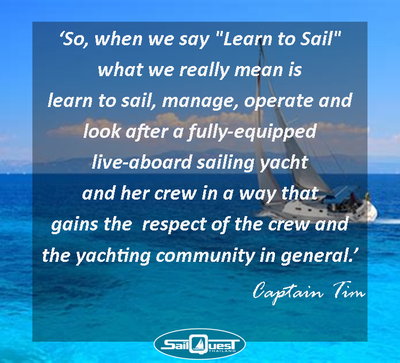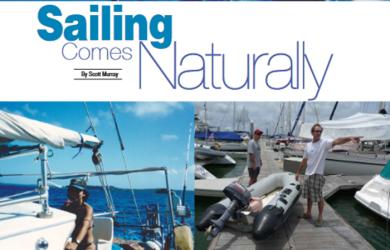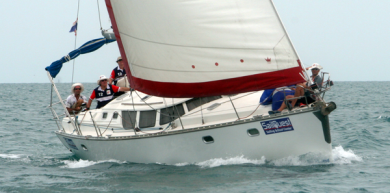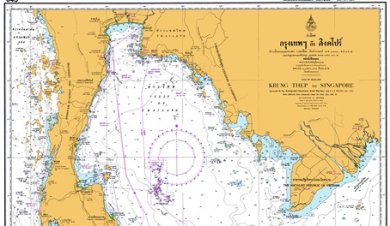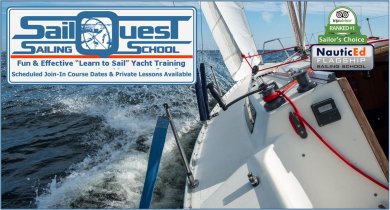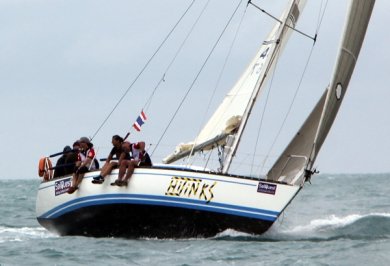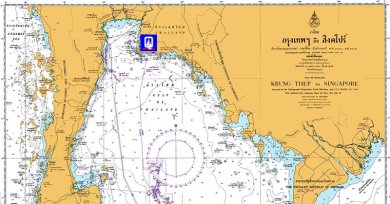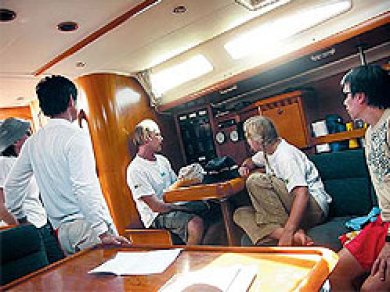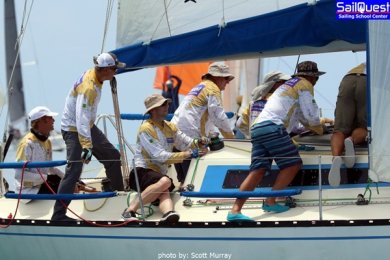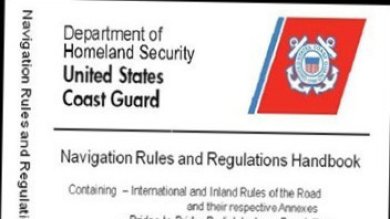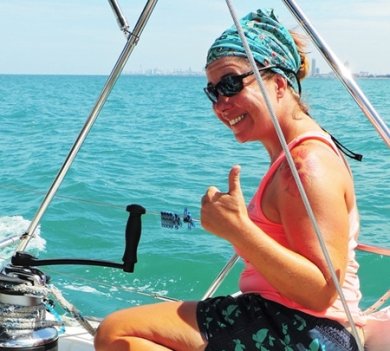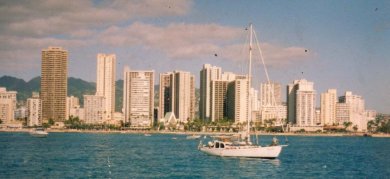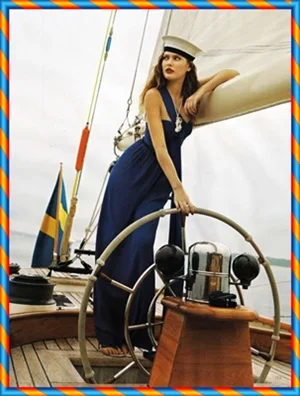
What to Pack When Sailing in Tropical Conditions - Overview
 PASSPORT & VISA
PASSPORT & VISA
For OTW COURSE students & SAILING EVENTS sailors who are joining events that do not include crossing international borders, there are no additional visa requirements.
As usual in Thailand, and as per Thai law, Thai citizens should have their national ID card or Drivers License with them and foreigners should bring their Passport with current, in-date visa stamp or a Thai Drivers License or Thai resident ID Card.
Basically, you should bring whatever document you would need to get on an airplane, should there be any reason for you to leave the event and grab a flight.
For sailors who join an event that includes border crossings and checking in/out at a port of entry outside of Thailand, the SailQuest Cambodia Voyage or a Yacht Delivery Event, for example, there may be additional visa requirements, depending on the passport and the country or countries involved. When entering a country thru a port entry point, visa requirements are typically the same as when entering thru an international airport. In some cases, it may be necessary to pre-apply for a visa before arrival.
When booking an international SAILING EVENT, please let us know which Passport you will be traveling with so we can check on any additional visa requirements.
For info on Thailand Visa requirements or if you need advice and/or assistance with a Thai Visa, see here: THAI E-VISA OFFICIAL WEBSITE
If you have any other questions regarding Passports, Visa, etc. Contact SailQuest and we will try to point you in the right direction.
 MONEY
MONEY
All onboard expenses are covered in the Join-In cost, including breakfast, lunch and dinner, soft drinks, bottled water, some fruit and snacks and other onboard consumables.
We will also be going ashore occasionally to have a meal and/or to have a look around. Onshore expenses are not included in the Join-In cost. There will most likely be a number of restaurant and dining options when we hit the shore. We typically choose an option and eat together, splitting the bill or we may decide to all do our own thing and meet up after to return to the yacht.
In any case, you can get a good meal anywhere in Thailand for 150 THB ($5USD) or less and a seafood feast at a waterfront Thai seafood eatery would be around 500THB ($14USD) per person, not including adult beverages. You will get some idea of how many meals we may have onshore by looking at the event itinerary.
Join-In sailors may also choose to stay ashore if we are anchored up for the night in a location where onshore accommodation is available. There will usually be options, from low-budget guesthouse to luxury beach resort. Sailors who take this option will usually head ashore and book on the spot.
It is not recommended to book anything in advance as the event itinerary may change at any point and the pre-booked room may be impossible to reach from where we end up dropping the hook for the night.
In addition to occasional meals and the possibility of a night or 2 onshore, Join-In sailors may also want to pick up personal items, some snacks or provisions, or you may want to buy the captain a cold beverage at a beach bar on a remote tropical island…
Thai baht (THB) is the coin of the realm. Currency Exchange, ATM machines and other banking services will be far and few between along our route. The best plan is to plan ahead and bring a little spending money.
 CLOTHING
CLOTHING
For live-aboard cruising in tropical conditions, sailors should pack comfortable, practical warm-weather clothing. Shorts, short sleeved shirts, swim wear, light-weight slacks, wind-breakers and rain gear that allow for freedom of movement without being overly loose and baggy and getting in the way of crewing tasks.
Clothing that can absorb a lot of water, like thick cotton sweat shirts & pants should be avoided – once wet they become heavy, soggy and uncomfortable and take a long time to dry out.
A light-weight long sleeved, long legged outfit can be useful as sun protection during the day or to cover up during a night watch when air and body temperatures drop.
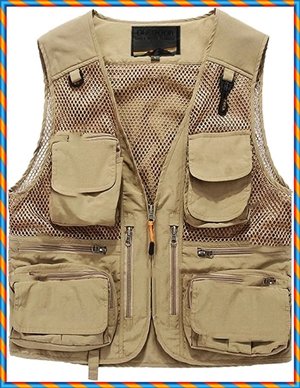 POCKETS
POCKETS
Having a few pockets available can come in handy when up on deck or in the dingy: sun & prescription glasses, mobile phones, cameras, hard candy, smokes & lighters, gloves, multipurpose pocket tool, small flashlight for night watches, bubble gum, a roll of whipping twine, sun cream, lip balm, a roll of electrical tape, spare contact lenses, hand-held VHF Radio, a pocket knife, wallet, an apple or orange, a few Band-Aids… what else can a sailor put in his or her pocket?
A fisherman’s style vest with a mesh fabric on the back to stay cool and numerous large and small pockets can be considered. Look for pockets with zippers so things don’t fall out when raising sails or leaning over the side looking for a rope caught in the prop...
A waist-bag or fanny pack with multiple compartments and a sturdy strap & buckle is another way to keep pocket items organized when up on deck.
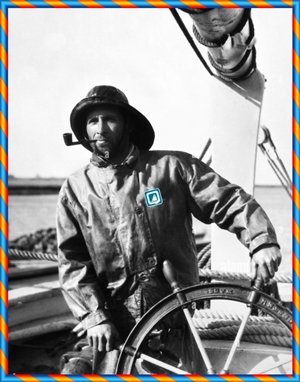 RAIN-WEAR
RAIN-WEAR
At some point along a sailor’s path to advance his or her sailing goals there may be a time when investing in a serious foul-weather outfit makes perfect sense.
Then it would be fairly normal to wonder if your new off-shore gear, a stylish outfit from Henri Lloyds, for example, was worth the nearly $2,500 price tag.
2 weeks later, you are up on deck, standing the 3 hour mid-night watch, the yacht being driven hard and fast, close-hauled to the wind.
Salty spray from the bow mixes with the continuous heavy rainfall before cascading into the cockpit and on top of the watch-team, racing on thru the pitch black night.
Suddenly, the companionway hatch slides open a crack and the radar-watch yells out, “iceberg dead ahead - 2 miles - and it’s a big one!”
You come up 5° on the helm, straining thru the spray and rain and darkness, trying to catch a glimpse of the hazard you are speeding towards… Your life, your world, has been reduced to this moment – unimaginable stress, endless sheets of icy water, frozen fingers locked to the wheel…
And in the middle of this wild activity you are aware of the fact that although your hands and face are freezing and you have been practically underwater for nearly 3 hours, your body is warm and dry. It’s at this moment you can justify the high cost of those awesome foulies!
Yes, at some point, top-rated foul weather gear becomes a necessity, but when sailing the tropical conditions of the Gulf of Thailand, serious off-shore gear is not the best choice – it’s hot, heavy and bulky. It’s total overkill.
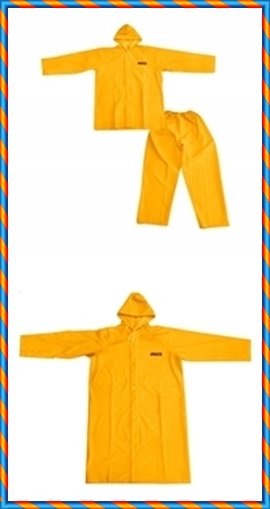
- Tropical foul weather gear should be light-weight, allow for free body movement without being too baggy, allow for air flow, be quick drying, and, of course, be water-proof (if you add “disposable” to the list, it is a perfect description of a 30x40 black plastic trash bag with arm and neck holes cut in, always an option for SailQuest sailors!).
- A rain jacket that goes below the waist is a good idea as it may keep your shorts or items in your pants pockets dry and also provides a dry seat.
- Open sleeves or cuffs provide airflow and drainage for water coming in thru the neck area.
- An attached hood is handy to keep the head dry. You won’t need to go looking for it and it won’t be blown overboard.
- PVC material and no liner dries the fastest. Gortex, nylon and other cloth material all absorb water and may dry slowly.
- A jacket and pants set should be considered. During a night-watch in a long rain shower it can start to feel quite chilly. Slipping into a pair of water-proof pants provides a little comfort for a cold and tired sailor whether it’s raining or not.
- Suitable tropical rain-wear doesn’t require a big investment. Here in Thailand you can find a PVC rain jacket/pants set at the Home-Pro for under $20. If that’s stretching the budget or if you only need something for the sailing course or event, light-weight (and usually short-lived) rain suit sets for motorbike riders can be found at most convenience stores and Thai markets for around $3.
- Rain ponchos will only be annoying onboard a yacht. The loose material will get in the way when grinding a winch or coiling a line then the wind will blow it out of the way and the rain comes in. It’s best to leave ponchos for the bikers and vaqueros.
Or you can do what the clever Thai fishermen do. When it starts to rain, the crew working on deck don’t put something on, instead they do the opposite. If you happen to encounter a local fishing vessel in a rain storm you may find it entertaining to see the tough fishermen hauling their nets and baiting their traps wearing underpants only. Definitely a Kodak moment!

BOAT SHOES
There is a wide variety of footwear that can work well onboard a yacht in tropical sailing conditions: classic topsiders, reef-walkers, expanded foam type (EVA foam), tennis & running shoes, sneakers, sandals and others.
Here are some points to consider:
- Soles should be fairly soft, have good traction on a wet deck and be 100% non-marking.
- One of the main reasons for wearing boat shoes is to protect your feet and especially your toes, from the deck hardware as you move around on deck. Jib-tracks & travelers, pad-eyes, fair-leads & line-organizers, hinges & latches, cleats & rope-clutches and any other items fixed to the deck will be kicked, stepped on and tripped over resulting in stubbed, dislocated and broken toes, twisted or sprained ankles and/or cuts & bruises. A good boat shoe protects your toes and the sides of your feet.
- Boat shoes should be easy to slip on and off, but they shouldn’t fall off when you don’t want them to. When walking on a steeply inclined deck or thru knee-deep water bringing the dingy ashore, for example. Flip-flops, clog-style expanded foam types, sandals without a sturdy heel strap can all fall off easily.
- Boat shoes get wet, even on larger yachts, from spray coming over the bow, from the rain, from dingy landings & launchings etc. A proper boat shoe that drains & dries quickly and will be more comfortable overall (and also less smelly).
- The expanded foam type of shoe (aka EVA foam, see photo) are a nearly perfect choice for sailing in the tropics. Good all-around foot protection, soft, non-slip, non-marking soles, easy to put on and take off but won’t fall off easily, instant drainage & drying and they not only float, but they will also provide some personal flotation; not as much as a life vest, but a pair of expanded foam shoes in your armpits will provide a noticeable amount of extra buoyancy. Under certain circumstances, a little extra buoyancy may be extremely useful.
- The brand name versions of expanded foam shoes can be quite pricey and perhaps a little over-priced. One popular manufacturer has a pair that sell for around $100 and another brand sells a nearly identical (same design, same materials, same quality) product on Lazada for under $10 delivered.
HATS & GLOVES
When crewing aboard a sailing yacht, the amount of exposure to the elements – wind, rain, sun, sea spray – largely depends on how the yacht you are sailing aboard is set up. Spray dodgers, cockpit awnings, Bimini tops, side panels, etc. will provide weather protection for the crew in the cockpit.
On a well-equipped off-shore cruising yacht it should be possible to avoid direct sunlight during the day and stay fairly dry in the cockpit area without having to put on your foul-weather gear in at least light to medium rain fall.
High performance racing yachts are typically completely open and the only place on deck to hide from the hot mid-day sun is in the shade of a sail. The only shelter from the rain is down below.
These factors will determine how important it is for crew members to be prepared and equipped to deal with the forces of nature at sea.
In addition to a packing clothing, rain gear and boat shoes suitable to warm weather tropical sailing, racing and cruising sailors should consider adding a few other items to their sea-bags.

Sailing Hats: sailors wear hats during the day to protect them from the sun and wind and at night to keep heads warm in cooler temperatures. In foul, rainy weather a hat protects eyes from driving rain and helps to keep heads dry-ish.
- A hat with a wide all-around brim would offer good shade from the sun but stronger winds will put pressure on a stiff brim and sent the hat overboard. In any case, a chin strap or clip-on tether is essential for hats with any type of brim, but an all-around stiff brim will catch a lot of wind and put constant strain on the chin strap which can be annoying, so all-around brims should be a bit floppy to reduce the pull on the chin strap.
- A hat with a panel on the back to protect the neck area should be considered.
- Baseball-type caps don’t offer much protection on the sides or back, but the long stiff visor in front does a good job keeping the rain and sun out of the eyes and they can usually be adjusted for a tight fit.
- A knit watch-keepers cap or a bandana can add a little comfort on a night watch, blocking wind and adding warmth.
- If you find a hat you like, buy 2. Definitely use a chin strap or tether to attach the hat to yourself, but at the same time, don’t get too attached to your hat. The wind never stops playing its hat-snatching games and sooner or later, when the chin strap is loose or the one time you forget to clip on the tether, the hat will be taken. In the right conditions, this may provide an excuse for a Man Overboard Exercise, but if you are racing, or running with the spinnaker set or sailing in larger waves or at night, accept the loss and join the very long list of sailors who put to sea with a hat on their head and returned hatless.

Sailing Gloves: unless currently employed as a lumberjack or recently released from a chain-gang on a ditch digging assignment, OTW CREW/CAPTAIN COURSE students and Join-In SAILING EVENT crew members are strongly recommended to bring along a pair of sailing gloves to prevent rope burn and blisters from forming on soft hands that may not be used to hauling & coiling braided and 3-strand line or grinding & tailing a jib sheet winch.
A good pair of warm weather sailing gloves has a re-enforced leather palm area and cut off fingers, they should drain and dry quickly and be easy to put on and take off.
Sailing gloves made by Harken, Lewmar, Gill and other yachting equipment manufacturers are available online and in marine supply shops and like most yachting products they tend to be overpriced.
Fortunately, there are many types of gloves that work very well as sailing gloves, sometimes even better than those sold by prestigious yachting brands.
A sturdy pair of gloves made for weight-lifting, cycling, golf or other sports, well-built with a leather palm, will do the job.
Or see what’s available at the local hardware store. Construction workers gloves or gardening gloves that will have a good grip on a wet rope or winch handle and will protect hands from a running line is what is needed. Some or all of the finger sections can be removed with a pair of scissors.
It is not uncommon for new sailors with a new pair of gloves in their bag to forget to wear the gloves or to overestimate the toughness of their hands or to underestimate the abrasiveness of a braided line until it is too late. OTW students requesting plasters on the morning of day 2 to treat blisters received on day 1 when doing tacking exercises without gloves may suffer a little during the rest of the course – it can be a painful lesson!
So, sailors who have gloves should keep them handy and wear them when needed and sailors who need gloves but forgot to bring a pair should let the instructor know. We can usually find a pair or 2 somewhere on the training yachts.
OTW CREW/CAPTAIN COURSE students and Join-In SAILING EVENT sailor's are welcome to pack and bring onboard whatever clothing, equipment or personal items they like. Phones, cameras, laptops, an extra pair of glasses or contacts, sunglasses, prescription medication, sun cream, soap, shampoo, toothbrush & toothpaste, pajamas or other sleepwear, snacks, candy, prefered beverages, - the list goes on & on...
Bed sheets, blankets, pillows, towels, tissue, basic first-aide supplies are provided.
If ther are any questions about what to bring or what notb to bring, please Contact SailQuest.

.png)

